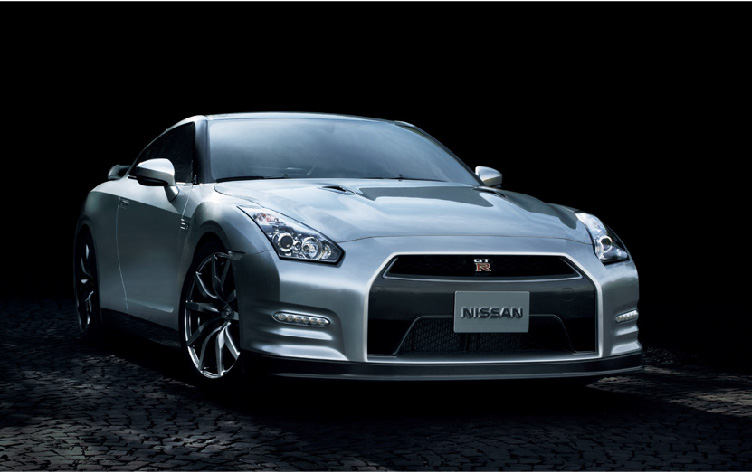
The Nissan GT-R’s story is “one of continuous improvement,” said Carl Phillips, Nissan’s head of marketing for the GT-R in the U.S. “There’s always something new for every model year. We’re taking one of the world’s greatest cars and making it better.”
The 2014 GT-R has been retuned and re-engineered for better responsiveness, while simultaneously offering a higher degree of luxury and refinement than ever before in Nissan’s performance flagship. Making its official North American debut at the 2012 Los Angeles Auto Show, the new GT-R is a careful evolution of an already formidable force in the world of exotic cars. With acceleration to challenge a Bugatti Veyron, and a level of highspeed maneuverability that shames many of the finest Italian supercars, the GT-R has already earned plenty of respect.
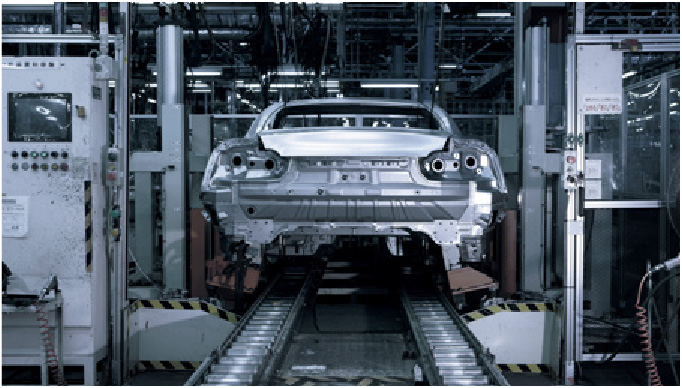
Tuned at the Track
Years of racing knowledge, and thousands of miles spent circling the Nürburgring, one of the world’s most daunting circuits, have led to a thorough round of improvements for the road-going GT-R. For the 2014 model year the GT-R continues its legendary Godzilla style muscle with its highly refined 545-bhp twin turbocharged ultra-high-performance 3.8-liter V-6 engine. Previous performance enhancements have upped the horsepower and torque of Nissan’s advanced VR38DETT engine, adding 15 pounds-feet of torque raising it to a 463 lb-ft of torque rating. For the 2014 model year Nissan’s team of engineers focused their attention on improving the GT-R’s mid-range engine response and high-speed acceleration. They equipped the GT-R with new high-output fuel injectors that more precisely control fuel injection, improving throttle and acceleration in the 4,500 – 6,000 rpm range. Instead of the typical cast-iron liners, each cylinder features a 95.5 x 88.4 plasma-sprayed bore to help reduce friction. They are lighter in weight, enhance cooling, and help with power output and fuel efficiency. The lightweight engine construction utilizes aluminum-alloy components to help improve performance. An oil pan baffle plate has been added to stabilize oil pressure under high-performance driving conditions. The baffle reduces rotational friction, which helps to contribute to the increased responsiveness.
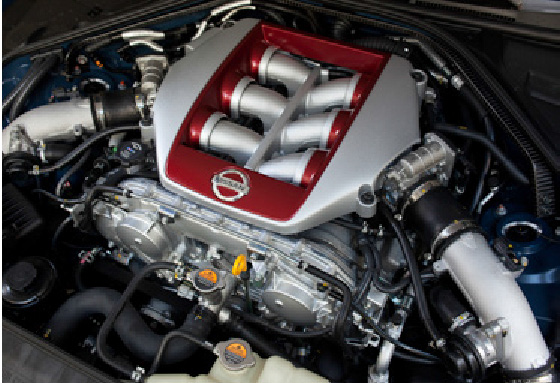
The GT-R story
Like the iconic Porsche 911, the Nissan GT-R’s story has been one of gradual change, not drastic makeovers. For the 2014 vehicle a lateral wet and dry sump oiling system has helped to prevent oil backflow into the cylinder head area during high-G maneuvers.
“The new oil pan baffle better stabilizes oil under high G-forces,” explains Carl Phillips.
The VR38DETT engine utilizes twin IHI turbochargers to enhance power output. They deliver boost to two independent intake plenums via twin air-to-air intercoolers. They are integrated into the exhaust manifold to provide quick response and help maintain the GT-R’s acceleration at high speeds. Engine output is measured at partial and full loads prior to shipment from the Yokohama engine plant. Microfinishing the crankshaft, camshafts, and camshaft valve lifters is a separate manufacturing process that puts an ultrasmooth finish on rotating surfaces, helping enable the shafts to turn with the least possible resistance. Thanks to these various detail improvements, keen drivers will notice a stronger plateau of torque at mid- and high-rpm ranges in the latest GT-R.
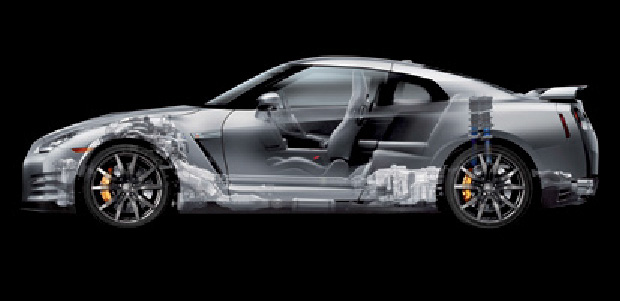
Hand-assembled
As in previous years the GT-R engine is hand-assembled in a special clean room environment. For those moments when customers aren’t pressing on the gas pedal on a straightaway, they can pop open the hood and show off an extra bonus.
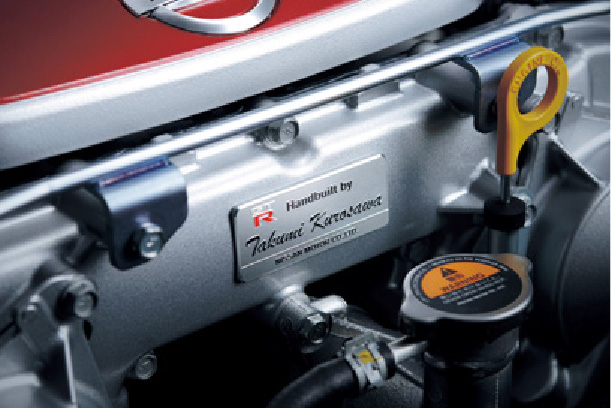
“The GT-R engines are all built by hand...a single person builds each engine from start to finish.”
Beginning with the 2014 models, aluminum nameplates have been added to each engine showing the name of the individual engine builder who constructed the turbo V-6 for each GT-R.
Nissan’s engineering team also worked on chassis development for the 2014 model enhancing the sense of “grabbing the road” and enhanced high-speed handling. The front suspension link bushing location was changed, a new anti-roll bar was added, the front roll-center height was reduced, and there was a change in spring and shock absorber specifications. This helps to lower the center of gravity and to provide enhanced handling characteristics at high speeds. Having as much weight located as low as possible is a way to improve handling and the overall behavior of the suspension. These modifications were done while improving performance during track day sessions and, conversely, giving a boost to driving refinement for everyday use.
GT-Rs standard liquid-filled engine mounts help to enhance comfort by reducing engine noise and vibration. Membranes inside the mounts vary damping to improve noise, vibration, and harshness absorption. The braking system was unchanged consisting of 15.35-inch front and 15.0-inch rear Brembo® full-floating drilled rotors, low-steel highstiffness brake pads, Brembo® monoblock six-piston front and fourpiston rear calipers. This setup works in combination to help minimize fade and provide intense stopping performance.
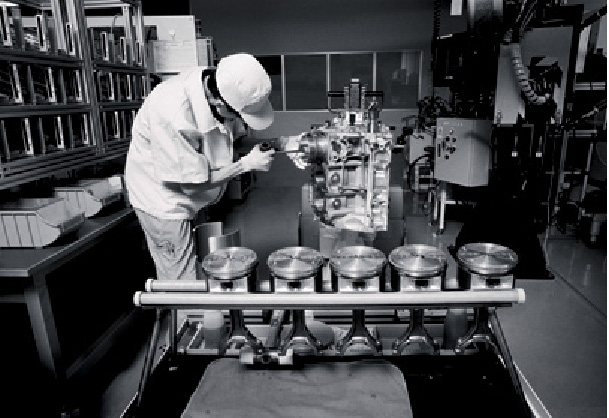
Maintenance of front suspension alignment has been improved. Cam bolts have been installed on the front suspension to improve camber accuracy and better maintain alignment settings. Meanwhile, the torque from the driveshaft to the hub bearings was increased, to improve reliability. Chassis reinforcements were also added behind the dash panel bar and instrument panel to boost rigidity. Brake cooling air guides have been added to the front and rear chassis on the Track Edition models. While not new for the 2014 model year, it is worth noting that Dunlop developed its SP Sport Maxx GT600 tires exclusively for the GT-R.
“The close working relationship between our engineering team and Dunlop is a big part of the car’s development,” says Nissan’s Carl Phillips.
Despite some earlier predictions that the new GT-R would shed a few pounds, the 2014 model has approximately the same 3,825 lb. curb weight of the outgoing model. Nissan also decided not to tweak the GT-R’s electronically-controlled ATTESA E-TS, or the dual-clutch automatic (with manual controls). This all-wheel-drive system places the transmission, transfer case and final drive at the rear of the vehicle, optimizing weight distribution and maximizing handling capability.
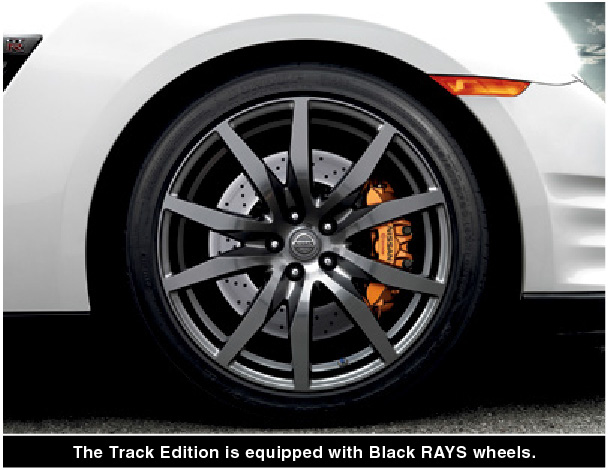
Total vehicle adjustability is provided by set-up switches located in the center of the instrument panel, enabling the driver to adjust transmission, shock absorbers and the Vehicle Dynamic Control (VDC-R) among three settings – Normal, Special or R. It was decided not to mess with a good thing.
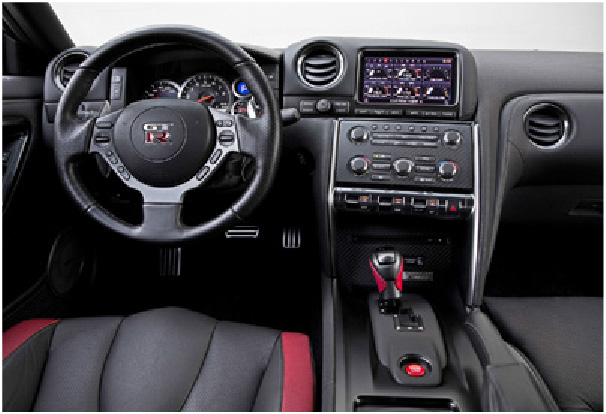
Even though the wheels and exterior of the model year are carryover, do not be fooled into thinking that the brutish-looking style of the 2014 GT-R is short on technical advancement.
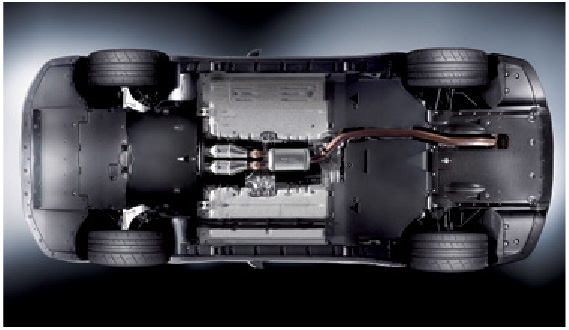
GT-R’s front fenders were designed to express power and stability. Their aero blade design not only looks aggressive, the shape has been optimized to improve airflow along the sides of the car. The vents in the front fenders not only look good, they also function to pull heat from the V-6 engine, help to reduce air pressure, and provide extra down force. The xenon high intensity (HID) headlights feature three additional sub-reflectors (compared to conventional lights) to provide a super wide illumination spread. Air flow above and below the vehicle is managed by a functional carbon fiber underbody diffuser and the dry carbon fiber rear spoiler (if so equipped). Believe it or not, the GT-R has a drag coefficient of only 0.26 Cd, while achieving high front and rear down force. That is almost equal to the 0.25 Cd served up by some fuel-sipping hybrids.
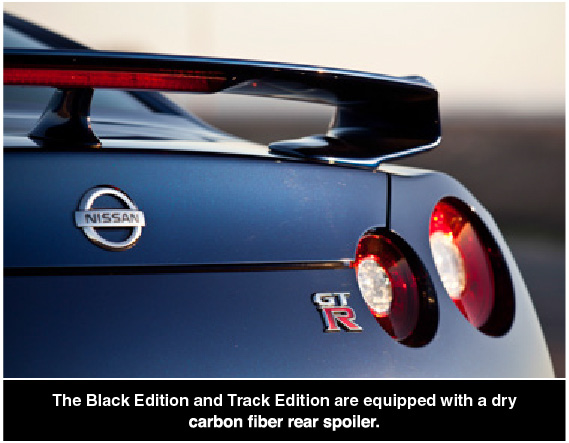
Cabin Improvements
For the new model year GT-R receives a number of cabin improvements, including an exclusive new premium interior option. The Premium Interior Package imparts a more upscale feel to the cabin and should appeal to a wider range of customers. GT-R’s interior was designed to balance functionality with a sense of ease and comfort. The Black and Premium edition GT-Rs feature Recaro sculpted performance bucket seats for an optimal driving position and a cockpit-style instrument panel with a large center-mounted tachometer. The multi-function display includes mechanical and driving information.
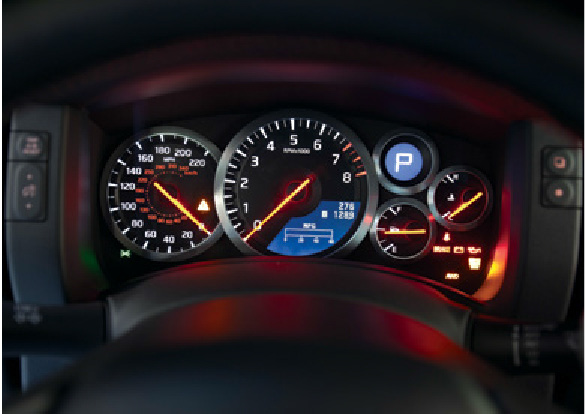
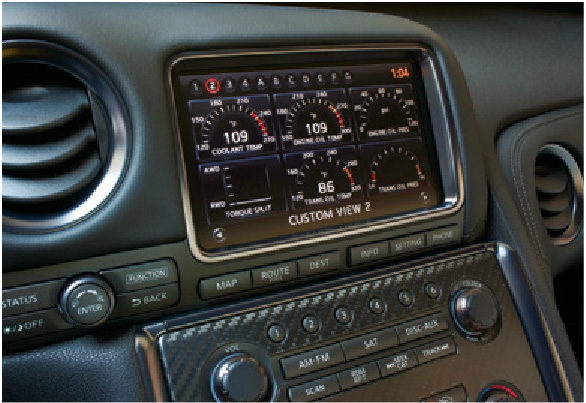
A specially designed 11-speaker Bose® sound system with speakers mounted in rigid aluminum die cast panels, which provides sound quality suitable for a supercar, is standard. Also standard on all models is a Nissan hard drive navigation system with 7” color display and RearView Monitor. The Black Edition GT-Rs include handstitched Amber Red semi-aniline leather appointments (front seats only) and a new red-accented steering wheel.
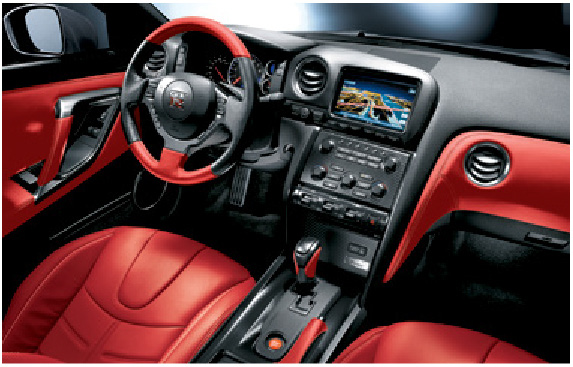
The Track Edition models are sans the rear seats and are equipped with special blue trimmed high grip seats.
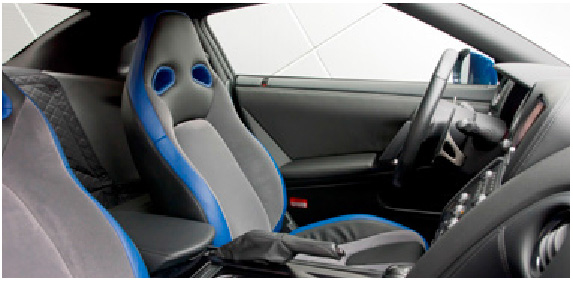
While the 2014 Premium, Black Edition and Track Edition improvements are appreciated, and all the added luxury is a nice touch, we will be willing to bet that our GT-R customers remain a dedicated core of enthusiasts who value 0-60 mph times over soft-touch surfaces.

Maintenance Note:
It is essential to choose the correct grade, quality, and viscosity of the engine oil to ensure satisfactory engine life and performance. Mobil RP (0W-40) (100% synthetic) is the factory fill oil. The VR38 engine with its plasma-sprayed bores was developed using this oil. Nissan cannot ensure proper engine operation and durability if other 0W-40 synthetic oils are used. If Mobil 1 (0W-40) is not available, Mobil 1 (10W-40) (100% synthetic) may be used; however, some performance loss may be noticed.

NOTE: Using an engine oil other than that specified could adversely affect the engine.
